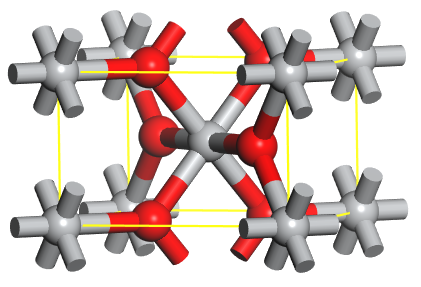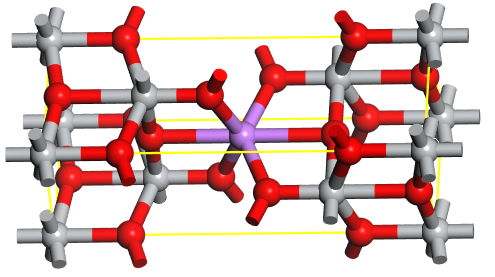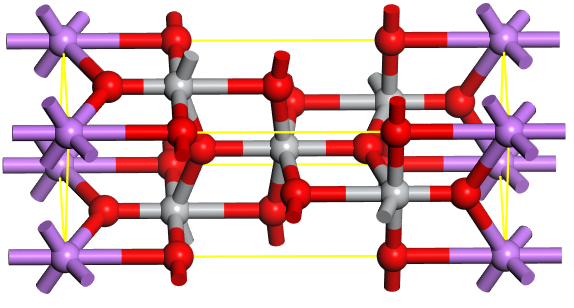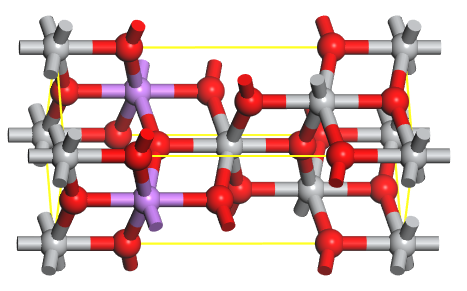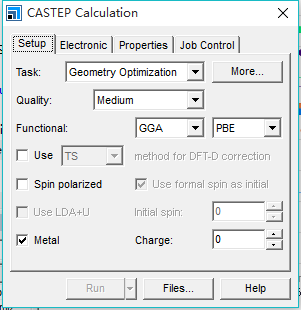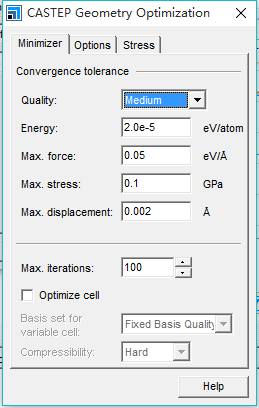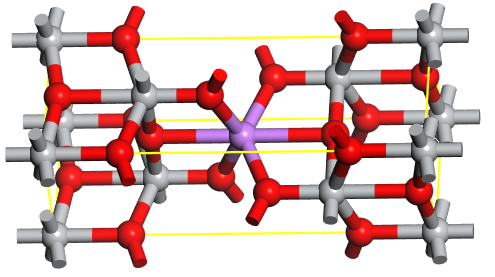以TiO2为负极材料的锂离子电池电极材料第一性原理研究毕业论文
2020-06-19 22:24:02
摘 要
目前对TiO2的光电学性质方面的研究有很多,进展很快,发现了很多重要的结论,对实际应用有较好的指导作用。但对锐钛矿TiO2在外界环境的影响下,生成时有各种缺陷情况下性质方面的研究报道却比较少,这些缺陷会对TiO2的某一些性能有较大的影响。为了更好地指导实践应用,本文通过CASTEP计算软件,对锐钛矿型TiO2中心Ti原子、顶点Ti原子、面上Ti原子被li原子取代后的结构进行优化,结合CASTEP软件对锐钛矿型TiO2晶胞的中心Ti原子、顶点Ti原子、面上Ti原子分别被Li原子取代后的晶胞做了结构优化,并对优化后的结构进行了能量最优化处理,发现优化后晶格体积膨胀从小到大的顺序为中心原子替代后的晶胞、面上原子替代后的晶胞,顶点原子替代后的晶胞;对于优化后晶胞的能量来说,其从小到达的顺序为顶点原子替代后的晶胞,中心原子替代后的晶胞,面上原子替代后的晶胞,其中前两种替代方式经过优化后晶胞的最终能量相差不大;而对于应力来说,最终应力趋向值从小到大的顺序为顶点原子替代后的晶胞,中心原子替代后的晶胞,面上原子替代的晶胞,其中后两种替代方式的应力最终趋向值相同都为0.1GPa;而对电子结构的分析结果来看,三种替代方式所产生的影响都非常的接近。这些重要的结论最终会对实践有一定的指导作用。
关键字:锐钛矿型TiO2 第一性原理 结构优化 能量优化
Study on the First Principle of Lithium Ion Battery Electrode Materials with TiO2 as Cathode Material
Abstract
Current research on aspects of optoelectronic properties of TiO2 has a lot of progress quickly, found a lot of important conclusions, better guidance for practical application. But anatase TiO2 under the influence of the external environment, the nature of the various aspects of defect cases reported is less than the generation, these defects would have a greater impact on some of TiO2. In order to better guide the practical application, this paper uses CASTEP calculation software to optimize the structure of the Ti atom in the center of the anatase TiO2, the Ti atom at the vertex, and the Ti atom on the surface. After combining with the CASTEP software, The Ti atoms, the Ti atoms at the apex Ti and the Ti atoms on the surface Ti atoms are replaced by Li atoms, and the optimized structure is optimized. It is found that the optimized lattice volume The order of expansion is from the order of the central atom to the unit cell after the substitution of the atom, the substitution of the atoms on the surface after the unit cell, the vertex atoms replaced after the unit cell; for the optimized cell energy, After the substitution of the unit cell, the central atom substitution after the unit cell, the surface of the atomic substitution after the unit cell, in which the first two alternatives after optimization of the final energy of the unit cell is not much difference; and for stress, the final stress trend values in ascending order of the cell after the cell vertex atoms Alternatively, the central atom Alternatively, the cell surface substitutional, wherein two alternative ways of stress after the final chemotaxis Values are the same as 0.1 GPa; and the results of the analysis of electronic structure, the impact generated by the three alternative ways are very close. These important conclusions will eventually have some practical guidance.
Key words:anatase TiO2; first principle; structural optimization; energy optimizati
目 录
摘要·····························································I
ABSTRACT························································II
第一章 绪论······················································1
1.1 研究背景以及意义·····················································1
1.2 锂离子电池的特点·····················································1
1.3 TiO2的结构和应用·····················································1
1.3.1 TiO2的结构······················································2
1.3.2 TiO2的应用······················································3
1.3.3 锐钛矿型TiO2的研究进展·········································3
1.4 课题的研究内容和意义·················································4
1.4.1 研究内容·······················································4
1.4.2 研究意义·······················································4
第二章 软件介绍及基础理论········································6
2.1 前言·································································6
2.2 CASTEP模块··························································6
2.3 密度泛函理论·························································7
2.3.1 Thomas-Femi理论················································7
2.3.2 Hobenberg-Kohn理论·············································9
2.3.2 Kohn-sham方程··················································9
2.4 交换关联势··························································10
2.4.1 局域密度近似··················································10
2.4.1 广义密度近似···················································11
2.4.3 杂化密度泛函···················································11
第三章 TiO2第一性原理研究······································12
3.1 利用materials studio软件建立TiO2模型··································12
3.2 对TiO2晶胞模型进行几何优化··········································13
3.3 对优化后的TiO2晶胞进行能量计算······································17
3.4 结论································································19
3.4.1 晶胞体积分析··················································20
3.4.2 能量分析······················································20
3.4.3 应力分析······················································21
3.4.4 电子结构分析··················································21
第四章 总结与展望··············································22
4.1 全文总结····························································22
4.2 存在的问题与展望····················································22
参考文献························································24
致谢····························································26
第一章 绪论
相关图片展示:
